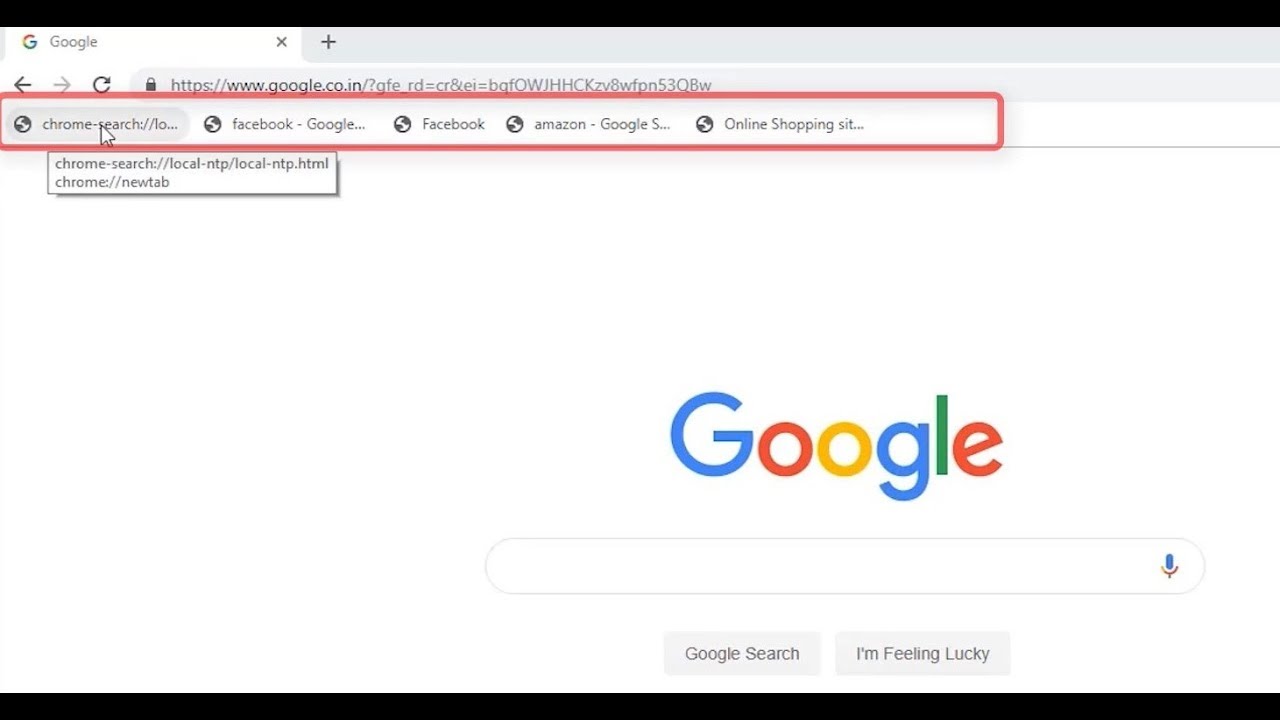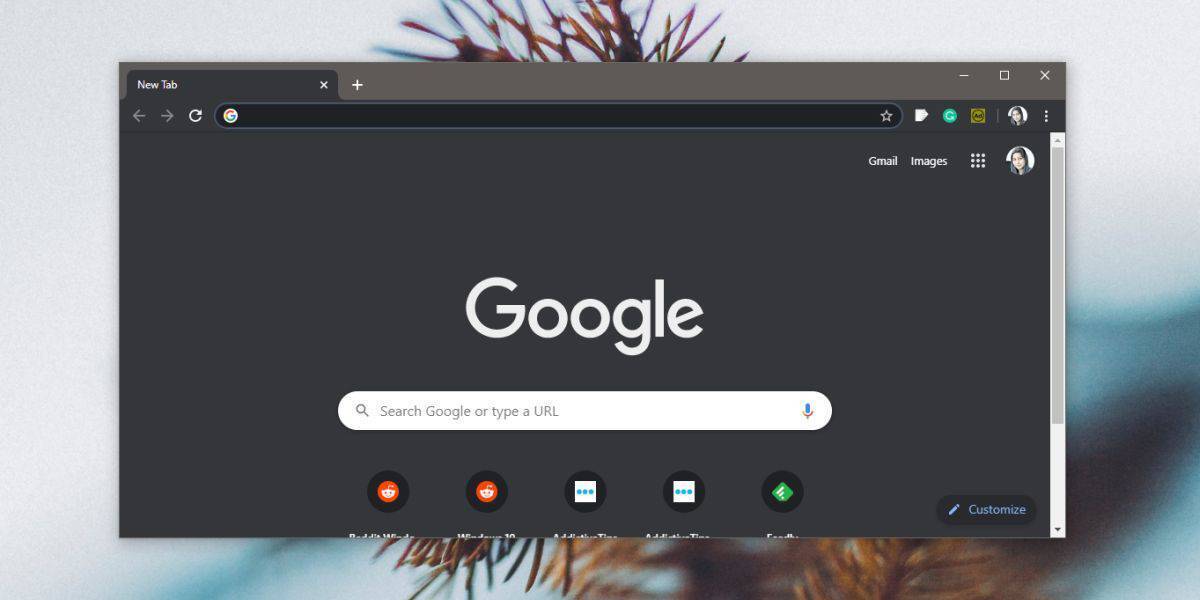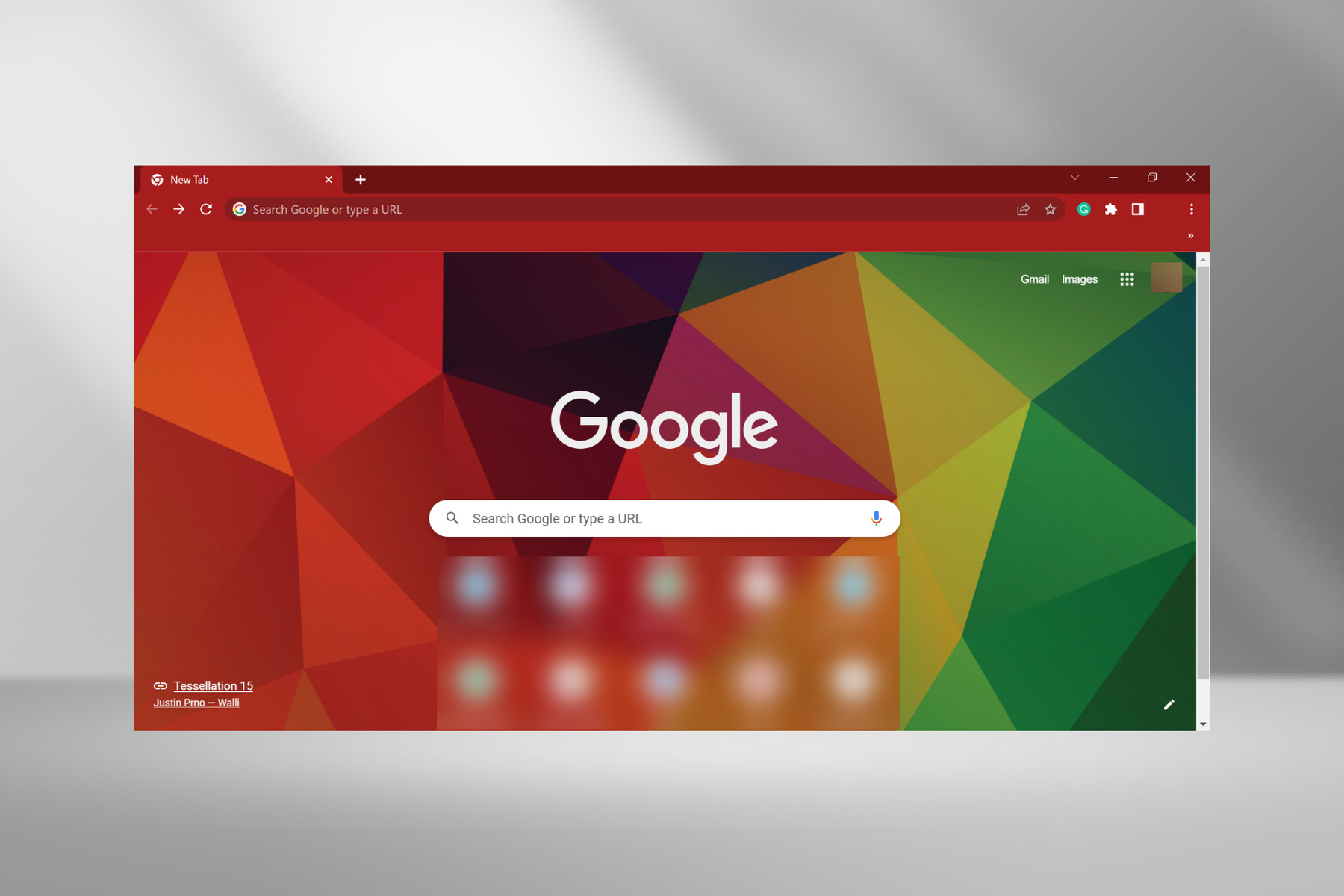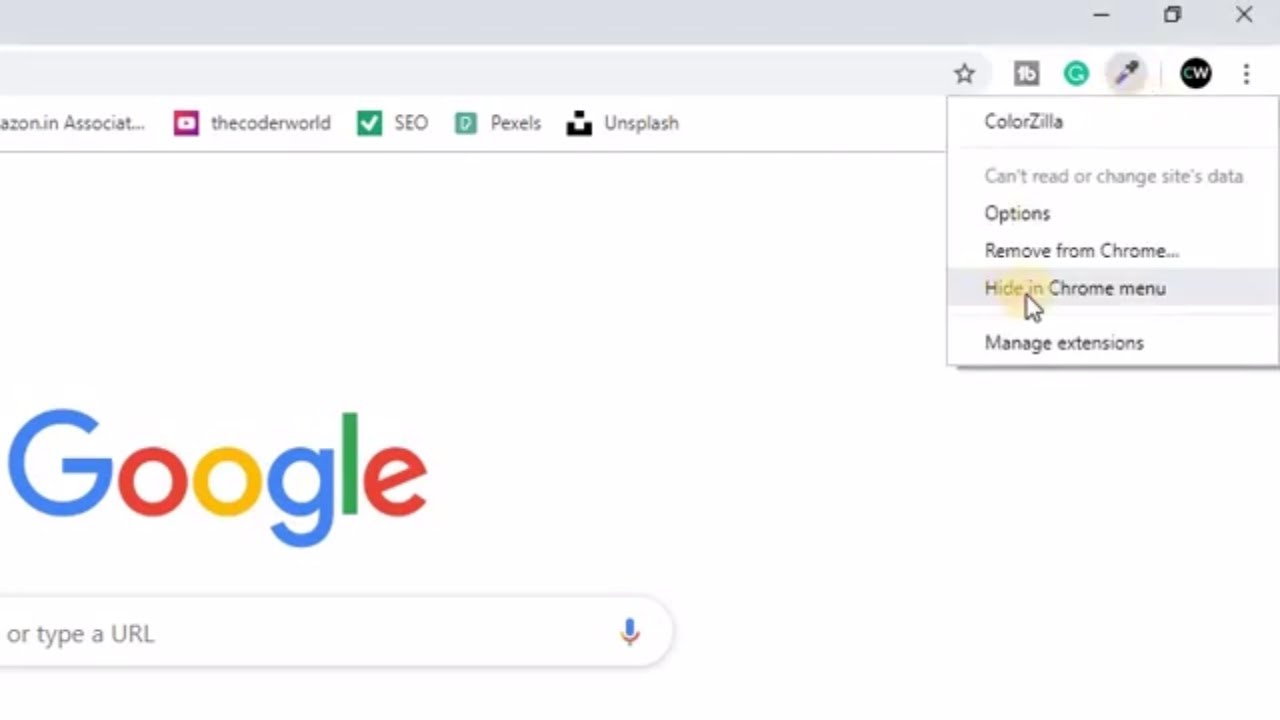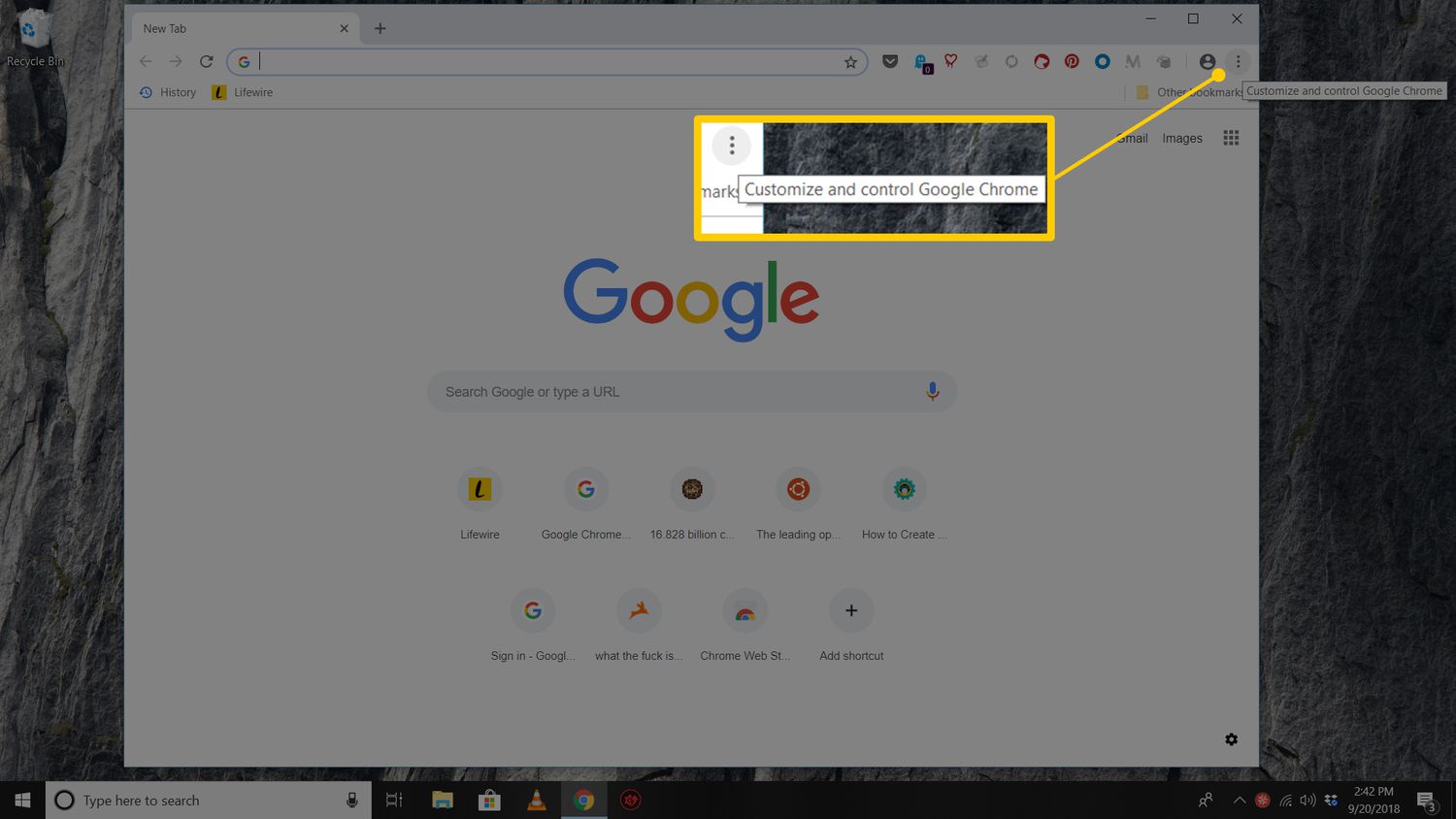Introduction
When it comes to web browsing, Google Chrome stands out as one of the most popular and feature-rich browsers available. Its sleek interface and customizable features make it a top choice for millions of users worldwide. However, some individuals may prefer a more immersive browsing experience by hiding the top bar in Chrome. Whether it's to maximize screen real estate, reduce distractions, or simply for aesthetic reasons, there are several methods to achieve this.
In this article, we will explore three effective ways to hide the top bar in Chrome. Each method offers its own unique approach, catering to different user preferences and technical abilities. Whether you're a casual user looking for a simple solution or a tech-savvy individual eager to explore advanced browser settings, you'll find a method that suits your needs.
By the end of this guide, you'll have the knowledge and tools to customize your Chrome browsing experience to your liking. So, let's dive into the methods and uncover the steps to seamlessly hide the top bar in Chrome, allowing you to enjoy a more streamlined and visually immersive browsing experience.
Method 1: Using Chrome Extensions
One of the simplest and most user-friendly ways to hide the top bar in Chrome is by utilizing Chrome extensions. These extensions are designed to enhance the functionality of the browser, offering a wide range of features, including the ability to customize the user interface. Here's how you can use Chrome extensions to achieve a seamless browsing experience with a hidden top bar:
-
Search for a Suitable Extension: Open the Chrome Web Store by clicking on the three-dot menu in the top-right corner of the browser and selecting "More tools" > "Extensions." In the search bar, enter keywords such as "hide top bar," "full screen," or "immersive mode" to explore available extensions designed for this purpose.
-
Select and Install the Extension: Once you've found a suitable extension, click on it to view more details. Check the user ratings, reviews, and the number of installations to gauge its reliability and effectiveness. If you're satisfied, click the "Add to Chrome" button to install the extension.
-
Configure the Extension: After installation, the extension may require some initial setup. This could involve adjusting settings related to the appearance of the browser interface, including the option to hide the top bar. Depending on the extension, you may have the flexibility to toggle the visibility of the top bar with a simple click or by using predefined keyboard shortcuts.
-
Enjoy the Immersive Browsing Experience: Once the extension is configured to your preference, you can immediately experience the benefits of a hidden top bar. Whether you're watching videos, reading articles, or engaging in any other online activity, the absence of the top bar can contribute to a more immersive and distraction-free browsing experience.
It's important to note that while Chrome extensions offer convenience and ease of use, it's essential to exercise caution when installing them. Stick to reputable extensions with positive reviews and a significant number of installations to minimize the risk of encountering security or performance issues.
By leveraging Chrome extensions, you can effortlessly hide the top bar in Chrome and tailor the browser's interface to align with your preferences. This method provides a straightforward solution for users who prioritize simplicity and accessibility, allowing them to enjoy a more visually immersive browsing experience without delving into complex browser settings.
Method 2: Using Chrome Flags
Another effective approach to hiding the top bar in Chrome involves leveraging Chrome Flags, which are experimental features and settings that allow users to customize and enhance their browsing experience. By accessing and modifying specific flags, users can unlock advanced options, including the ability to hide the top bar. Here's a detailed exploration of how to utilize Chrome Flags to achieve a seamless and immersive browsing experience:
-
Accessing Chrome Flags: To begin, enter "chrome://flags" in the address bar of your Chrome browser and press Enter. This will take you to the Chrome Flags page, where a plethora of experimental features and settings are available for customization. It's important to approach these settings with caution, as they are experimental and may impact browser stability if misconfigured.
-
Search for the Desired Flag: On the Chrome Flags page, you can use the search bar to look for specific flags related to the browser's user interface. Keywords such as "top-chrome-md," "compact navigation," or "UI layout for the browser's top chrome" may lead you to relevant flags that can be modified to hide the top bar.
-
Modify the Flag Setting: Once you've identified the appropriate flag, you can adjust its setting from the default "Default" or "Enabled" to "Disabled." This action instructs Chrome to implement the changes associated with the selected flag, potentially resulting in the hiding of the top bar.
-
Relaunch Chrome: After modifying a flag, Chrome will prompt you to relaunch the browser to apply the changes. Ensure that you've saved any important work and then click the "Relaunch" button to restart Chrome with the updated flag settings.
-
Experience the Hidden Top Bar: Upon relaunching Chrome, you should observe the effects of the modified flag. If successful, the top bar should be hidden, providing you with a more streamlined and visually immersive browsing environment.
It's important to note that Chrome Flags are experimental features, and modifying them can impact the stability and performance of the browser. Therefore, it's advisable to exercise caution and only adjust flags if you are familiar with their implications. Additionally, keep in mind that Chrome Flags are subject to change, and certain flags may be removed or replaced in future browser updates.
By utilizing Chrome Flags, users can tap into the experimental side of Chrome customization, potentially unlocking advanced options to hide the top bar and tailor the browser's interface to their preferences. This method caters to individuals who are comfortable exploring and modifying advanced browser settings, offering a more hands-on approach to achieving a personalized browsing experience.
Method 3: Using Full Screen Mode
Utilizing the full screen mode in Google Chrome provides a straightforward and effective way to immerse yourself in a distraction-free browsing experience by hiding the top bar. Whether you're engrossed in a captivating video, engaged in research, or simply seeking a clutter-free interface, activating full screen mode can elevate your browsing experience. Here's a comprehensive guide on how to leverage full screen mode to hide the top bar in Chrome:
-
Enter Full Screen Mode: To initiate full screen mode, navigate to the webpage or content you wish to view without the top bar. With the desired page open, click on the three-dot menu in the top-right corner of the Chrome browser window. From the dropdown menu, select the "Enter full screen" option. Alternatively, you can press the F11 key on your keyboard to swiftly enter full screen mode.
-
Experience Immersive Browsing: Upon entering full screen mode, the browser interface, including the top bar, will seamlessly disappear, allowing the content to occupy the entire screen. This uncluttered view enhances your focus and engagement with the displayed content, offering a visually immersive experience.
-
Accessing Browser Controls: While in full screen mode, you can access essential browser controls by moving your cursor to the top of the screen. This action reveals the hidden top bar and other browser controls, enabling you to navigate between tabs, manage bookmarks, or utilize other browser features as needed.
-
Exit Full Screen Mode: When you're ready to exit full screen mode and return to the standard browser view, simply press the F11 key on your keyboard or move your cursor to the top of the screen to reveal the browser controls. From there, click the "Exit full screen" button, or press the "Esc" key to seamlessly transition back to the regular browsing interface.
By leveraging full screen mode, users can effortlessly hide the top bar in Chrome, creating an unobtrusive and visually immersive browsing environment. This method offers a simple yet effective approach for individuals seeking a seamless way to maximize their screen real estate and minimize distractions while engaging with online content.
Whether you're watching videos, conducting research, or simply prefer a clutter-free browsing experience, activating full screen mode in Chrome empowers you to tailor your browsing environment to suit your preferences, ultimately enhancing your overall browsing experience.
Conclusion
In conclusion, the ability to hide the top bar in Google Chrome offers users the flexibility to customize their browsing experience according to their preferences. Throughout this guide, we've explored three distinct methods, each catering to different user needs and technical comfort levels.
By utilizing Chrome extensions, users can easily enhance their browsing experience by installing specialized tools designed to hide the top bar. This method is particularly suitable for individuals who prioritize simplicity and accessibility, providing a seamless way to achieve a visually immersive browsing environment without delving into complex browser settings.
For those inclined towards exploring advanced browser settings, leveraging Chrome Flags presents an experimental yet effective approach to customizing the browser's interface. By modifying specific flags, users can unlock advanced options, potentially leading to the hiding of the top bar. This method caters to individuals comfortable with a more hands-on approach to browser customization.
Additionally, the utilization of full screen mode in Chrome offers a straightforward and effective way to immerse oneself in a distraction-free browsing experience. Activating full screen mode seamlessly hides the top bar, allowing users to maximize their screen real estate and engage with online content in a visually immersive manner.
Ultimately, whether it's for maximizing screen real estate, reducing distractions, or simply for aesthetic reasons, the ability to hide the top bar in Chrome empowers users to tailor their browsing environment to suit their preferences. Each method offers its own unique advantages, catering to a diverse range of user preferences and technical abilities.
As technology continues to evolve, users are presented with an array of options to personalize their browsing experiences. Whether through user-friendly extensions, experimental Chrome Flags, or the simplicity of full screen mode, Google Chrome provides users with the tools to create a browsing environment that aligns with their individual needs and preferences. By understanding and utilizing these methods, users can unlock the potential for a more immersive and tailored browsing experience within the Chrome browser.









